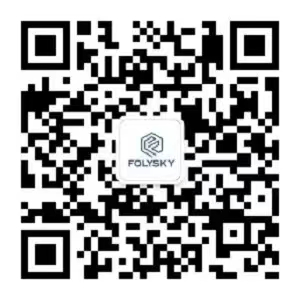 FOLYSKY(WuHan) LTD.
FOLYSKY(WuHan) LTD.
 FOLYSKY(WuHan) LTD.
FOLYSKY(WuHan) LTD.

At present, with the development of the LED industry at home and abroad in the direction of high efficiency, high density, high power, etc., from 2017 to 2018, it can be seen that the overall domestic LED has made rapid progress, and the power is also growing, and the development of heat dissipation materials with superior performance has become a top priority to solve the LED heat dissipation problem. In general, LED luminous efficiency and service life will decrease with the increase of junction temperature, when the junction temperature reaches more than 125 ° C, LED will even fail. In order to keep the LED junction temperature at a low temperature, it is necessary to use high thermal conductivity, low thermal resistance of the heat dissipation substrate material and reasonable packaging process to reduce the overall packaging thermal resistance of the LED.
At present, the commonly used substrate materials are Si, metal and metal alloy materials, ceramics and composite materials, etc. Their thermal expansion coefficient and thermal conductivity are shown in the following table. The cost of Si material is high; The inherent electrical conductivity and thermal expansion coefficient of metal and metal alloy materials do not match the chip materials; Ceramic materials are difficult to process and other shortcomings, are difficult to meet the various performance requirements of high-power circuit boards at the same time.

Power type LED packaging technology has been developed so far, the available cooling substrates are mainly epoxy resin copper-covered substrate, metal copper-covered substrate, metal composite substrate, ceramic copper-covered substrate and so on.
Epoxy-coated copper substrates are widely used in traditional electronic packaging. It has three functions: support, conduction and insulation. Its main characteristics are: low cost, high hygroscopic resistance, low density, easy to process, easy to realize micro graphics circuit, suitable for large-scale production. However, because the substrate of FR-4 is epoxy resin, the thermal conductivity of organic materials is low, and the high temperature resistance is poor, so FR-4 can not adapt to the requirements of high-density and high-power LED packaging, and is generally only used in low-power LED packaging.
Metal-coated copper substrate is a new type of substrate after FR-4. It is made by directly bonding copper foil circuit and polymer insulation layer with metal and base with high thermal conductivity through thermal conductive bonding material, and its thermal conductivity is about 1.12W /m·K, which is greatly improved compared with FR-4. Due to its excellent heat dissipation, it has become the most widely used product in the current high-power LED cooling substrate market. However, it also has its inherent disadvantages: the thermal conductivity of the polymer insulation layer is low, only 0.3W /m·K, resulting in heat that can not be transferred directly from the chip to the metal base; The thermal expansion coefficient of Cu and Al is large, which may cause serious thermal mismatch problem.
The most representative material of metal matrix composite substrate is aluminum silicon carbide. Aluminum silicon carbide is a metal matrix composite material that combines the low expansion coefficient of SiC ceramics and the high thermal conductivity of metal Al. It combines the advantages of the two materials and has a series of excellent characteristics such as low density, low thermal expansion coefficient, high thermal conductivity and high stiffness. The coefficient of thermal expansion of AlSiC can be adjusted by changing the content of SiC to match the coefficient of thermal expansion of adjacent materials, thus minimizing the thermal stress of both.
Ceramic substrate materials are mainly common Al2O3 ceramic substrate, aluminum nitride ceramic substrate, SiC, BN, BeO, Si3N4, etc. Compared with other substrate materials, ceramic substrate has the following characteristics in mechanical properties, electrical properties, thermal properties:
(1) Mechanical properties. Mechanical strength, can be used as a support component; Good processability, high dimensional accuracy; Smooth surface, no micro cracks, bending and so on.
(2) Thermal properties. The thermal conductivity is large, the thermal expansion coefficient is matched with Si and GaAs chip materials, and the heat resistance is good.
(3) Electrical properties. Low dielectric constant, low dielectric loss, high insulation resistance and insulation damage, stable performance under high temperature and high humidity conditions, high reliability.
(4) Other nature. Good chemical stability, no hygroscopicity; Oil and chemical resistance; Non-toxic, pollution-free, alpha radiation emission is small; The crystal structure is stable, and it is not easy to change in the use temperature range; Rich in raw material resources.
For a long time, Al2O3 and BeO ceramics are the two main substrate materials for high-power packaging. However, these two substrate materials have inherent shortcomings, the thermal conductivity of Al2O3 is low, and the thermal expansion coefficient does not match the chip material; Although BeO has excellent comprehensive properties, it has high production cost and is highly toxic. Therefore, from the aspects of performance, cost and environmental protection, these two substrate materials can not be used as the most ideal material for the development of high-power LED devices in the future. Aluminum nitride ceramics have high thermal conductivity, high strength, high resistivity, low density, low dielectric constant, non-toxic, and Si matching thermal expansion coefficient and other excellent properties, will gradually replace the traditional high-power LED substrate materials, become the most promising ceramic substrate materials in the future.

Follow us

customer service